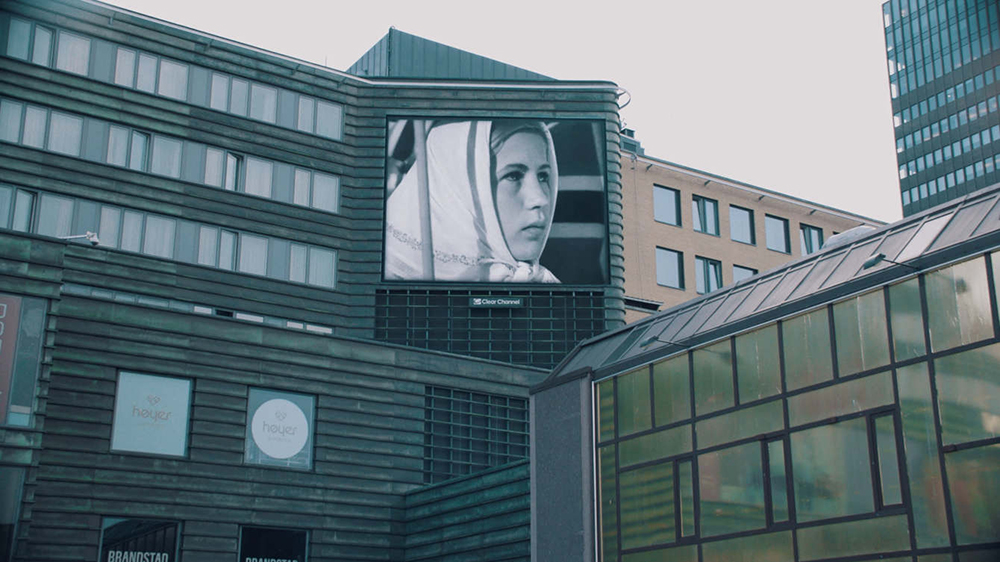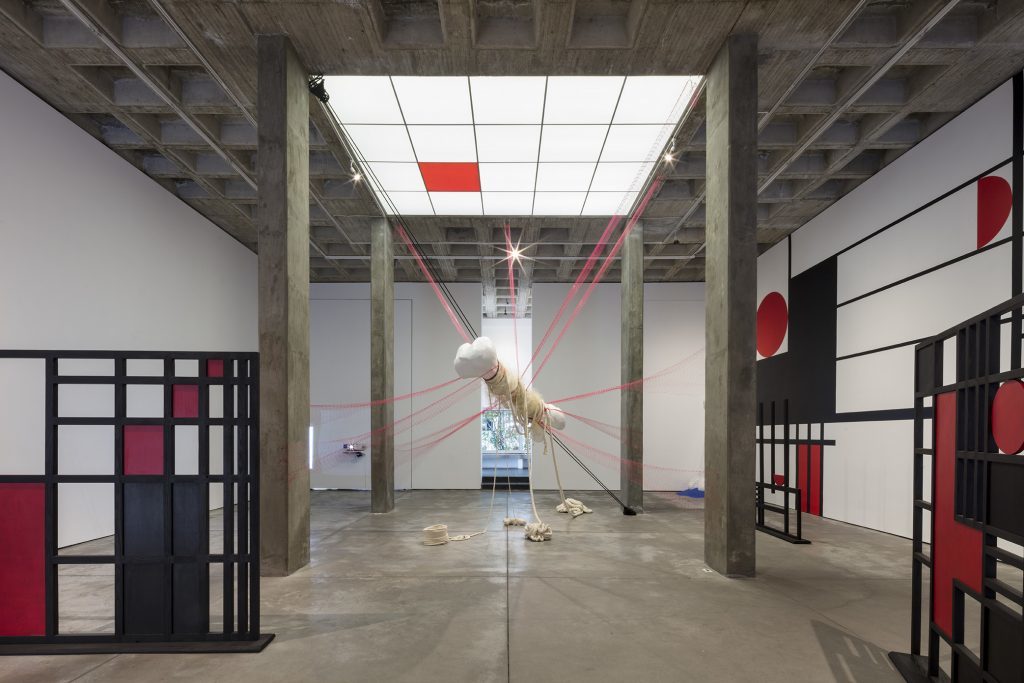
Sara Eliassen, The Feedback Loop, Public screen intervention, Oslo Central Station
and Jernbanetorget, June 11 – 17, 2018
Sara Eliassen’s (b. and b. in Oslo, 1977) site-specific video-intervention for her project The Feedback Loop, which also encompasses a film and conference program and an exhibition at Munchmuseet on The Move – Kunsthall Oslo, Dronning Eufemias gate 34, was displayed in Oslo Central Station for one week in June 2018. To devise the intervention, Eliassen parted from the idea that it was important to break through the daily flow of the images that surround us – the sensible regime – in a dense public space. For the project, screen time from advertisement spaces in Oslo’s Central Station was bought. Some of the screens have the format of giant smartphones, others are more traditional large displays and in them, Eliassen inserted five versions of a (10-) 30 second long video that pop up simultaneously on all screens interrupting the stream of local commercials.


